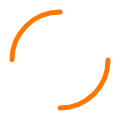Physician Frequently Asked Questions (FAQs)
Physician Frequently Asked Questions (FAQs)
At this point we would like to help you with answers to frequently asked questions from the medical field:
Since two incisions were made to implant the catheter, a total of two sutures must be removed by a physician at the implanting clinic or, in individual cases, by the patient’s family physician. The skin thread after 7 – 10 days and the retaining thread, at the exit point of the catheter only after approx. 30 days.
Yes, but care must be taken to ensure that the dressing around the catheter has again been completely covered with the shower foil dressing and that the valve has been placed on the compresses under the foil.
There is no time limit for the catheter, it usually does not need to be changed. However, if drainage is no longer possible due to the viscosity of the effusion despite flushing of the catheter, the catheter has been damaged by improper handling, or there is an infection associated with the catheter, the catheter may need to be changed or explanted.
Further reasons for changing or explanting the catheter can be found in the detailed description of explantation.
Shortly after discharge from the hospital, the patient is provided with the first drainage material by our training staff, within a training session. You can find out more about this under Discharge Management. Subsequently, the material is prescribed by the patient’s attending general practitioner. The ewimed company sends the drainage material directly to the patient’s home after receiving the prescription. The drainage sets are declared as aids and require a prescription. They are not available through medical supply stores or pharmacies. You can find out more about this under Processes.
The reasons for this can be varied and depend on the individual course of your patient’s disease. Imaging procedures, such as sonography, X-ray or CT, can contribute to a differentiated decision. Chronic concomitant diseases should also be taken into account by you, as the symptoms may be similar or overlapping. For more info, see our clinic guide. In any case, check the condition of the catheter and flush it if necessary. Flush catheter
The effusion color can change over time, varying from light yellow to dark amber. The effusions may contain blood coagulum or protein filaments, resulting in a cloudy or milky consistency. But also a clear outpouring, without components is possible. Again, your patient’s individual condition is important. If the effusions are bloody, the cause of the bleeding source must be found out. This may require inpatient hospitalization.
After discharge from the hospital and application training by our training staff, patients will need prescriptions from their primary care physician for follow-up care. For this purpose, some sample recipes for our products in home care are available for viewing on our homepage.
If effusion flow stops during drainage, several reasons may be the trigger. The most pleasant reason is that there is no more effusion. If this occurs more often, spontaneous pleurodesis may have occurred and the catheter can be explanted. Another reason could be a blockage of the drainage tube, which is caused by a viscous or fibrinous effusion. In this case, you can try to mobilize the blockage by gently “milking” the drainage tube so that the effusion flows again, or the catheter must be flushed. You can read how the flushing process is performed here.
The follow-up care of patients after discharge is completely taken over and coordinated by ewimed. You can ensure that the follow-up care runs smoothly by ensuring the following points:
- 1. the patient’s follow-up care at home has been clarified (relatives, nursing service, etc.).
- 2. the discharge order has been completed in full, sent to ewimed and the original has been given to the patient. A completed sample discharge ordinance can be found on our website.
- 3. the implantology card is completed and given to the patient.
- 4. complete drainage was performed before discharge.
- 5. all drainage systems have been removed from the catheter and the catheter is properly connected.
- More details about the process can be found in our clinic guide.
The “Discharge Order” form is supplied together with a patient folder in the shipping box with each catheter set, but is no longer supplied directly with the catheter set as usual. If the documents are lost you can download and print the form here. Likewise, you will also find a sample of a completed discharge order here.
If you have any questions about implantation, our sales representatives will be happy to advise you and are also available to assist you during implantation. Please contact your responsible sales representative directly or contact us at info@ewimed.com or +49 7471 73972-0.
If you have further questions or if the described answers are not suitable, please contact ewimed at any time at info@ewimed.com or +49 7471 73972-0. We will be happy to help you.
Do you have any further questions about our drainage systems, our service or our company?

